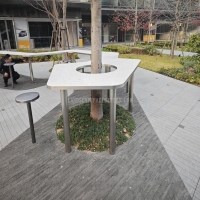Welcome to the website for landscape facilities products and knowledge.
How does the table’s design support the use of edge computing for real-time data processing?
In the evolving landscape of digital transformation, the architectural design of data tables plays a crucial role in facilitating edge computing capabilities for real-time data processing. Unlike traditional centralized database structures, modern table designs incorporate distributed architecture principles that allow computational resources to move closer to data generation sources. This strategic positioning significantly reduces latency by processing information at the network periphery rather than routing everything to centralized cloud servers.
The fundamental table structure supporting edge computing typically employs lightweight, modular designs that can operate efficiently on constrained hardware. These tables are optimized for horizontal partitioning, enabling seamless distribution across multiple edge nodes while maintaining data consistency through sophisticated synchronization protocols. The columnar organization within these tables allows for rapid parallel processing of streaming data, making them ideal for time-sensitive applications ranging from autonomous vehicle decision-making to industrial IoT monitoring.
Furthermore, advanced indexing mechanisms within these specialized tables enable quick data retrieval without overwhelming the limited computational power available at edge locations. The implementation of time-series optimized tables ensures that temporal data—critical for real-time analytics—can be processed with maximum efficiency. Smart caching layers integrated into the table architecture help minimize redundant data transfers between edge devices and central clouds, conserving bandwidth while ensuring data freshness.
Another significant design consideration involves the incorporation of adaptive compression algorithms that reduce the footprint of processed data without compromising analytical integrity. These compression techniques work in tandem with intelligent data lifecycle management policies embedded within the table structure, automatically determining which data requires immediate processing at the edge versus what can be forwarded for deeper analysis in central repositories.
The convergence of these table design elements creates an ecosystem where edge computing flourishes, enabling applications that demand instantaneous responses—from real-time fraud detection in financial transactions to predictive maintenance in manufacturing environments. As organizations continue to generate exponentially increasing volumes of data at network edges, the thoughtful design of processing tables will remain instrumental in harnessing the full potential of distributed computing paradigms.
Related search:

Recommendation
An outdoor bar counter with stainless steel and terrazzo materials in an irregular shape